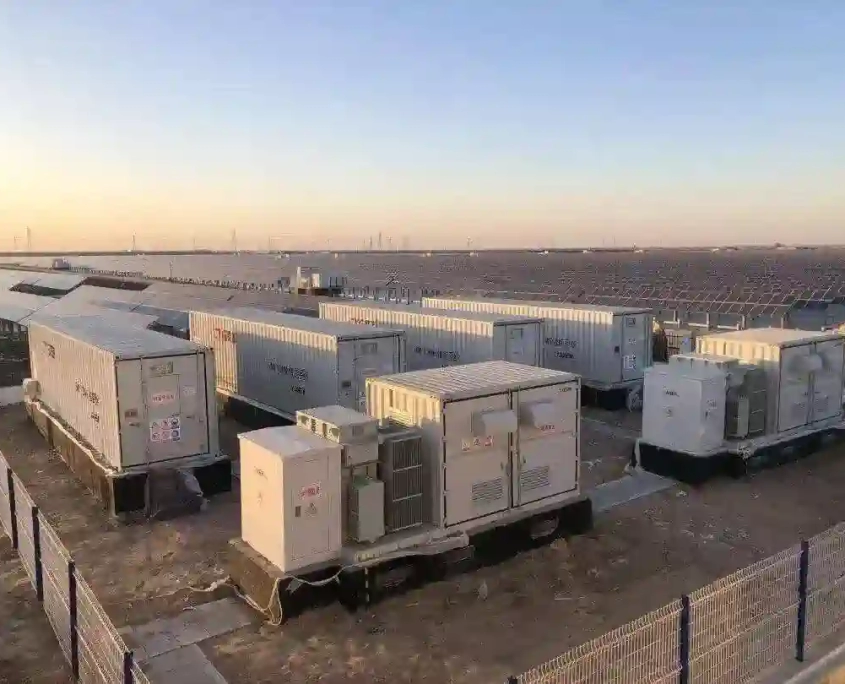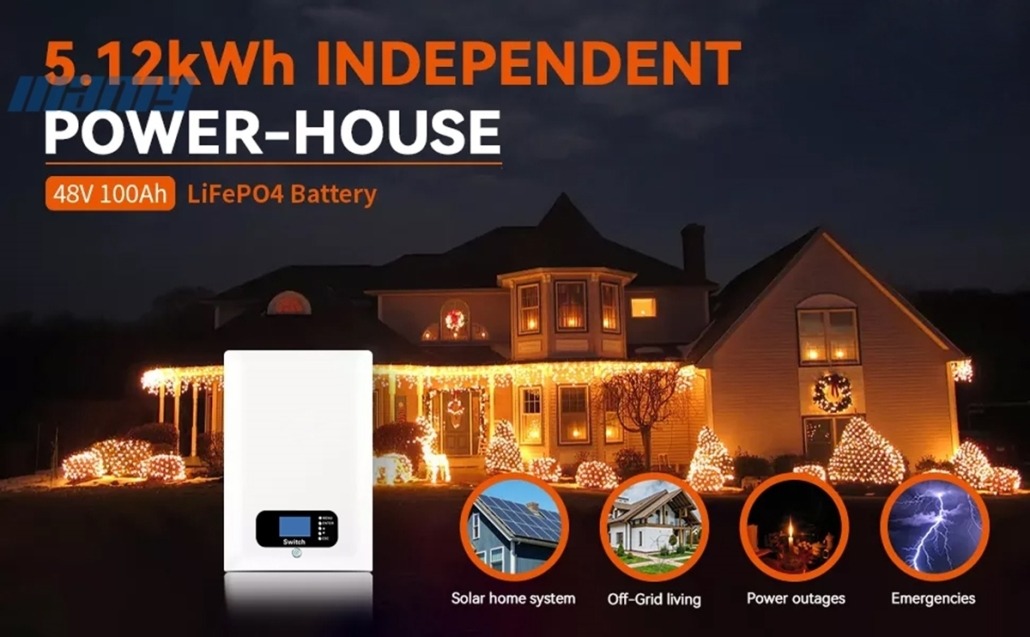More Products
5 Major Advantages Of New Long Duration Energy Storage (LDES)
Currently, the global power industry is at a critical stage of energy transition from fossil fuels to renewable energy. However, the rising proportion of renewable energy in the power structure brings new challenges. The randomness, intermittency, and volatility of wind and solar power generation create substantial structural pressure on existing power systems.
Large amounts of wind and solar energy integration could lead to frequent power surpluses and shortages. If the proportion of new energy installations continues to increase, periods of power imbalance may last for several days or even weeks. Moreover, with the backdrop of global warming, extreme weather events may increase the frequency of power fluctuations.
In summary, in this energy transition race, the power industry will face three main challenges:
- Imbalance of power supply and demand: Both power surplus and shortage situations will occur more frequently over a longer time frame.
- Change in power transmission and distribution model: Transition from traditional power transmission and distribution to a distributed, source-grid-load interactive model will result in significant cost increases for grid upgrades.
- Loss of system mechanical inertia and rotating reserve: Most renewable energy sources lack the mechanical inertia of traditional generators, reducing the overall grid frequency regulation capacity and further reducing grid stability.
- The new long-duration energy storage (LDES) technology is key to solving the challenges of new energy integration.
LDES: Key to Solving Renewable Energy Challenges
As lithium-ion battery storage is widely deployed in the power sector, its disadvantages, primarily its safety issues and poor economics for long-duration (>4h) storage applications, gradually emerge.
The new LDES can improve the flexibility of power systems by storing and releasing energy over a longer time frame (>4h, across days, weeks, seasons). Its primary application scenarios are seen in four areas:
- Intra-day storage: Long-duration storage of 4-12 hours addresses the imbalance of power supply and demand within the day.
- Cross-day, cross-week storage: Mainly handles short-term weather anomalies (lack of sunlight, water scarcity, etc.), leading to medium and long-term power imbalances.
- Cross-season application: It resolves the winter peak energy demand and long-term uncertainties in the power system caused by climate change.
- Response to extreme weather events.
- The new LDES can be achieved through various technological routes.
LDES can be achieved using various technologies
The application scenarios mentioned above require the new LDES to meet the technical requirements for intra-day, cross-day, cross-week, and cross-season storage, while also being more competitive in terms of economy, safety, and capacity scale.
This demands that the new LDES can flexibly scale up to maintain power supply for several hours, days, or even weeks, reducing the use of rare metal raw materials (like nickel, cobalt, manganese required for lithium-ion batteries), thereby compensating for the shortcomings of lithium-ion battery systems for long-duration storage. The new LDES can be achieved through various means, such as mechanical, thermal, electrochemical, and chemical storage.
- Mechanical storage: The most mature mechanical storage technology is pumped storage, accounting for 95% of the global total storage capacity, but it has certain requirements for plant site selection. New pumped storage facilities such as geomechanical water pumps can reduce its reliance on geographical conditions. Other mechanical storage includes compressed air storage, gravitational storage, and liquid air storage. Compressed air storage also encompasses thermal storage, storing the heat generated during the compression process for reuse in the discharge cycle; gravitational storage is in the early stages of commercialization.
- Thermal storage: Thermal storage technology can simultaneously release electricity and heat. The technological routes can be divided into changing the temperature of the medium, changing the state of the medium material, and thermochemical heat reaction, etc. These technologies use media like molten salt, concrete, aluminum alloy, or rock material to store heat in an insulated container. The most commonly used technological route combines molten salt with concentrated solar power (CSP) facilities.
- Chemical storage: This includes hydrogen storage and natural gas storage.
- Electrochemical storage: In terms of long-duration storage based on electrochemical reactions, flow batteries are a relatively mature technology. Flow batteries store electrical energy in a chemical solvent in an external tank, and charge and discharge are achieved through an ion-exchange membrane.
Novel metal-air flow batteries mainly use low-cost and abundant resources such as metal, air, and water. They feature scalability and lower system installation costs. Hybrid flow batteries have both a liquid electrolyte and a metal anode, combining the characteristics of traditional flow batteries and metal batteries.
LDES has 5 key advantages over other energy storage forms
The increasing proportion of renewable energy power generation will drive the need for storage for 8-12 hours or even longer durations. This forms an important market for new long-duration energy storage (LDES). Compared to lithium batteries, the new LDES technology has the following five advantages:
- Lower marginal cost when storing large amounts of electrical energy.
- Energy and power are decoupled, allowing for more flexible system design and operation.
- Modular and scalable design, with fewer site requirements and enhanced safety.
- The technology does not depend on rare elements, resulting in lower economic costs and the benefits of industrial scale effects.
- Shorter construction cycle compared to the upgrade and expansion of transmission and distribution networks, enabling faster implementation and integration into the power grid.
Facing complex application scenarios from the transmission side, grid side, and user side, the application scenarios of the new Long Duration Energy Storage (LDES) can mainly be divided into the following five areas:
- Energy storage and capacity backup to optimize the transmission and distribution network. This advantage helps reduce wastage and maximize the use of generated energy.
- Optimize the supply of electric energy in remote areas and improve grid instability. This could significantly improve the reliability of power in areas that have traditionally struggled with consistent supply.
- Support the stability and safety of off-grid/microgrid facilities, like isolated power systems. This could prove crucial for remote or isolated locations where conventional grid connection is impractical.
- Participate in the spot market for electricity and manage the quality of electricity: this assists businesses in reducing electricity costs, hedging against price fluctuations in electricity and fuel, and achieving environmentally friendly operations.
- Participate in grid ancillary services to improve grid stability: Some LDES systems have rotating inertia and can participate in frequency regulation and other ancillary services.
Long Duration Energy Storage (LDES) is expected to see large-scale growth
Although some new LDES technologies are still in the early stages, against the backdrop of accelerated energy transition, the International Long Duration Energy Storage Council (LDES Council) and McKinsey predict that LDES will start to see large-scale installations worldwide from 2025. The accumulated installed capacity is expected to reach 30-40GW (total capacity of 1TWh), which is 6-8 times the current public capacity, with 95% of the installations being distributed.

By 2030, with the penetration rate of renewable energy expected to reach 60%-70%, the accumulated installed capacity of LDES is expected to reach 150-400GW (total capacity of 5-10TWh).
By 2040, the global LDES installed capacity is projected to expand to 1.5-2.5TW (total capacity of 85-140TWh), approximately 8-15 times the current total storage capacity. This would reduce carbon emissions by 1.5-2.3 billion tons per year, accounting for about 10%-15% of the current power sector emissions.
The power stored will represent 10% of the global electricity production, with a market size exceeding one trillion US dollars. This also means that by 2040, the cumulative investment in LDES will reach 1.5 to 3 trillion US dollars. As of 2021, the cumulative investment in major LDES companies had reached 2.5 billion US dollars, nearly doubling in the past four years.
Overall, the increase in the share of renewable energy will greatly promote the installation capacity and market development of LDES. The point at which renewable energy accounts for 60%-70% of the market share in the power system could be a key milestone for the development of LDES.




